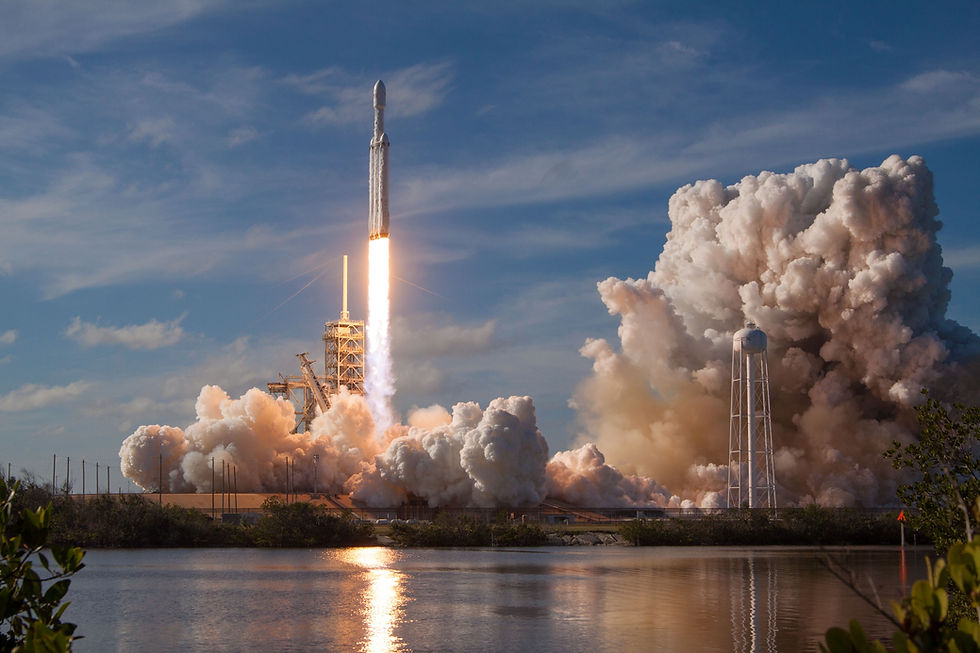How can we clean up our solar system?
- Oxbridge Intelligence

- Mar 8, 2021
- 3 min read
By Rachel Gould - Engineering Student @ Jesus College, Cambridge
We are witnessing growing concern around the world around the effect that waste is having on our planet, but what about the waste that is not on our planet? With rocket launches now sending man-made objects into space multiple times a week, we are littering our atmosphere at an astonishing rate without considering the consequences that this could have on space travel in the future. In this article, I will detail what space debris is, why it is a problem, and what is currently being done to tackle this issue.
Space debris, as defined by NASA, is “any man-made object in orbit about the Earth which no longer serves a useful function”. As of December 2020, this consists of almost 2000 abandoned rocket stages, 2850 defunct satellites, and almost 130 million other fragments of debris. This amounts to 8,800,000kg of waste currently orbiting our earth. With each high-speed fragment having the capability of damaging functioning satellites (which provide GPS, weather forecast, internet access) and spacecraft, it is a disaster waiting to happen.
One solution that is currently in development by Surrey Space Centre, RemoveDEBRIS, has been in testing for around three years. It consists of a small, 65cm, cube shaped mothercraft that captures debris and returns it to earth to remove the hazard from orbit. This was tested in 2018-19 by deploying the mothership from the ISS, having it deploy a target CubeSat (a small 10cm satellite) and then recapture it to prove the functionality of the capture mechanism.
The first theory for capture involved using a net of 5m diameter, which works by launching 6 masses that are attached around the perimeter of the net simultaneously. These masses pull the net closed, like a drawstring bag, securing the debris to the mothership. The second theory utilised a harpoon capture, which is tethered the mothership and then launched using compressed gas, piercing the target to grab it and allow it to be returned to the ship.
This mission was a success for many reasons. Firstly, it demonstrated the removal of space debris, proving it is possible. Both net and harpoon methods are viable for relatively large pieces of debris. However, many are rightfully skeptical about whether this is the answer to this problem. Think back to the statistics from before. Is it really feasible to remove 8,800 tonnes of waste in this way, one by one?
So what alternatives are there? SpaceX have developed boosters for their rockets that can be reused many times instead of being abandoned, and these are now in regular use. And while this slows the rate of accumulation of debris, it does not remove the 130 million pieces that are currently there. Additionally, not all of the rocket is recoverable, so although it’s a step in the right direction, it doesn’t actually fix the problem. While progress is being made to tackle this issue, it is far from resolved. It is the responsibility of space agencies to ensure that we do not get so carried away with the exciting developments in space technology that we neglect the hazard that is the debris that it leaves behind, hindering future advancements.
Further reading:
Podcast by ESA and UNOOSA on space debris: https://www.esa.int/Safety_Security/Space_Debris/ESA-UNOOSA_new_debris_infographics_and_podcast
Cambridge University Press: RemoveDEBRIS: An in-orbit demonstration of technologies for the removal of space debris https://www.cambridge.org/core/journals/aeronautical-journal/article/removedebris-an-inorbit-demonstration-of-technologies-for-the-removal-of-space-debris/88B966915E7A3BD6F0B047A38FF713D2
NASA: Space Debris and Human Spacecraft https://www.nasa.gov/mission_pages/station/news/orbital_debris.html





Comentários